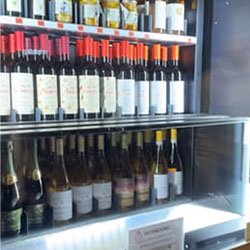Italians are also conservative to the point of stubbornness when it comes to cooking. Still, different foods have been introduced to the country in recent years, and you’d think that a people so in love with food would have a passion for trying out new flavors.
I’m by no means dissatisfied with the food living in Italy, though sometimes I just miss Japanese cuisine.
Thanks to its recent boom in popularity though—starting with sushi and then moving to things like ramen and okonomiyaki, I can now get Japanese food whenever I want, even in Italy. Still, the quality of the sushi here is nothing like it is back in Japan.
Take cucumber rolls, for example. It doesn’t get much simpler than a piece of cucumber rolled in rice and seaweed, but it’s something that made me realize just how delicious Japanese cucumbers are. If you really pay attention, you’ll find that many Italians dislike cucumbers. Of course in my mind I’m thinking, if you had been raised eating Japanese cucumbers, there’s no way you wouldn’t like them.
Interestingly, there’s one Japanese food that I can absolutely delight in even if the consistency is a bit different than it is back home, and that’s eel.
About a hundred kilometers south from Venice is a place called Comacchio, a beautiful canal town often referred to as “Little Venice.” It’s also famous for eel.

If you get tired of the throngs of tourists in Venice, I definitely recommend heading down to Comacchio. The best time to go is during the eel festival in autumn, though it’s of course wonderful any time of year.

The reason Comacchio is famous for eel is that they’ve been raising them in this town forever—all the way back to Roman times. The town is located in the wetlands, and people have taken advantage of this natural environment to raise eel. Through a combination of traditional and modern methods, they are able to produce some very high-quality stock.
Comacchio even has an eel museum and eel tours, with the locals eager to put their town on the map for eel production. There are all kinds of cultural activities during the festival season too, including local music and dancing. It’s known for being fun for people of all ages.

So… if the Japanese are known for broiled eel over rice, does that mean that the Italians eat eel over pasta?
Nope! In Comacchio, eel is typically charbroiled, oven-broiled, marinated, stewed in tomato sauce, fried, and served in risotto.

The local eel here is less fatty than what you get in Japan, with firmer meat. Because of that, it pairs well with rich tomato sauces or dishes that use rosemary or other fragrant spices.
As someone who’s used to eating eel Japanese style, hot and juicy from the grill and covered in tare sauce, don’t think for a minute that I’m disappointed by Comacchio eel. It’s absolutely delicious, even for a Japanese palate.































































